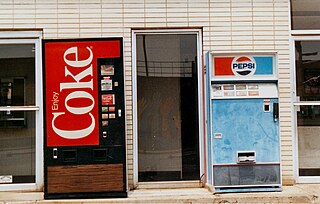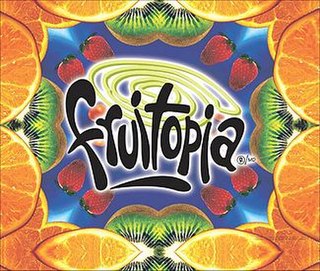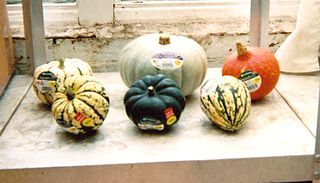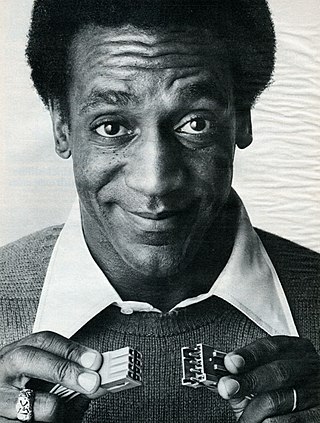
Coca-Cola, or Coke, is a carbonated soft drink manufactured by the Coca-Cola Company. In 2013, Coke products were sold in over 200 countries worldwide, with consumers drinking more than 1.8 billion company beverage servings each day. Coca-Cola ranked No. 87 in the 2018 Fortune 500 list of the largest United States corporations by total revenue. Based on Interbrand's "best global brand" study of 2020, Coca-Cola was the world's sixth most valuable brand.

Irn-Bru is a Scottish carbonated soft drink, often described as "Scotland's other national drink". Introduced in 1901, the drink is produced in Westfield, Cumbernauld, North Lanarkshire, by A.G. Barr of Glasgow.

Pepsi is a carbonated soft drink manufactured by PepsiCo. Originally created and developed in 1893 by Caleb Bradham and introduced as Brad's Drink, it was renamed as Pepsi-Cola in 1898, and then shortened to Pepsi in 1961. In 2022, it was the second most valuable soft drink brand worldwide, behind Coca-Cola.

A soft drink is any water-based flavored drink, usually but not necessarily carbonated, and typically including added sweetener. Flavors used can be natural or artificial. The sweetener may be a sugar, high-fructose corn syrup, fruit juice, a sugar substitute, or some combination of these. Soft drinks may also contain caffeine, colorings, preservatives and other ingredients.

New Coke was the unofficial name of a reformulation of the soft drink Coca-Cola, introduced by The Coca-Cola Company in April 1985. It was renamed Coke II in 1990, and discontinued in July 2002.
Advertising in video games is the integration of advertising into video games to promote products, organizations, or viewpoints.

The cola wars are the long-time rivalry between soft drink producers The Coca-Cola Company and PepsiCo, who have engaged in mutually-targeted marketing campaigns for the direct competition between each company's product lines, especially their flagship colas, Coca-Cola and Pepsi. Beginning in the late 1970s and into the 1980s, the competition escalated until it became known as the cola wars.

Fresca is a grapefruit-flavored citrus soft drink created by The Coca-Cola Company. Borrowing the word Fresca from Italian, Spanish and Portuguese, it was introduced in the United States in 1966. Originally a bottled sugar-free diet soda, sugar sweetened versions were introduced in some markets.

The Coca-Cola Company is an American multinational corporation founded in 1892, best known as the producer of Coca-Cola. The drink industry company also manufactures, sells, and markets other non-alcoholic beverage concentrates and syrups, and alcoholic beverages. The company's stock is listed on the NYSE and is part of the DJIA and the S&P 500 and S&P 100 indexes.

OK Soda is a discontinued soft drink created by The Coca-Cola Company in 1993 that courted the American Generation X demographic with unusual advertising tactics, including neo-noir design, chain letters and deliberately negative publicity. After the soda did not sell well in select test markets, it was officially declared out of production in 1995 before reaching nationwide distribution. The drink's slogan was "Things are going to be OK."

Mello Yello is a highly caffeinated, citrus-flavored soft drink produced, distributed and created by the Coca-Cola Company that was introduced on March 12, 1979, to compete with PepsiCo's Mountain Dew.

Fruitopia is a fruit-flavored drink introduced by the Coca-Cola Company's successful Minute Maid brand in 1994 and targeted at teens and young adults. According to New York Times business reports, it was invented as part of a push by Minute Maid to capitalize on the success of Snapple and other flavored tea drinks. The brand gained substantial hype in the mid-1990s before enduring lagging sales by decade's end. While still available in Canada and Australia as a juice brand, in 2003, Fruitopia was phased out in most of the United States where it had struggled for several years. However, select flavors have since been revamped under Minute Maid. Use of the Fruitopia brand name continues through various beverages in numerous countries, including some McDonald's restaurant locations in the United States, which carry the drink to this day.

Alcohol advertising is the promotion of alcoholic beverages by alcohol producers through a variety of media. Along with nicotine advertising, alcohol advertising is one of the most highly regulated forms of marketing. Some or all forms of alcohol advertising are banned in some countries. There have been some important studies about alcohol advertising published, such as J.P. Nelson's in 2000.

Fast food advertising promotes fast food products and utilizes numerous aspects to reach out to the public.

Food marketing brings together the food producer and the consumer through a chain of marketing activities.
Advertising to children refers to the act of advertising products or services to children as defined by national laws and advertising standards.
Advertising is a form of selling a product to a certain audience in which communication is intended to persuade an audience to purchase products, ideals or services regardless of whether they want or need them. While advertising can be seen as a way to inform the audience about a certain product or idea it also comes with a cost because the sellers have to find a way to show the seller interest in their product. It is not without social costs. Unsolicited commercial email and other forms of spam have become so prevalent that they are a major nuisance to internet users, as well as being a financial burden on internet service providers. Advertising increasingly invades public spaces, such as schools, which some critics argue is a form of child exploitation. Advertising frequently uses psychological pressure on the intended consumer, which may be harmful. As a result of these criticisms, the advertising industry has seen low approval rates in surveys and negative cultural portrayals.

American comedian and actor Bill Cosby was a popular spokesperson for advertising from the 1960s – before his first starring television role – until the early 2000s. He started with White Owl cigars, and later endorsed the Jell-O frosty ice pop treats Pudding Pop, gelatin, Del Monte, Ford Motor Company, Coca-Cola, American Red Cross, Texas Instruments, E. F. Hutton & Co., Kodak, and the 1990 United States Census. As of 2002, Cosby held the record for being the longest-serving celebrity spokesperson for a product, through his work with Jell-O. In 2011, he won the President's Award for Contributions to Advertising from the Advertising Hall of Fame.
The United States food and beverage industry has increased the amount of advertising that intensively and aggressively targets children through multiple channels. Food marketers know that the youth consumers have equal if not more spending power than adults, they hold purchasing influence, and have the potential to be lifelong consumers. The advertisements for products predominantly high in sugar and fat have increased and have had an effect on the major health epidemic in the US of Childhood obesity, and as such are inconsistent with national dietary recommendations. Food advertisements have moved from the television into the classroom. Marketing companies are exploring new creative techniques to reach their target audience, young children, through promotions, contests, and incentive programs. As a result, the US has progressively been placing regulations on how much advertising is allowed during children's programming.

Coming Together is a 2-minute ad created and distributed by the Coca-Cola Company and launched on the night of January 14, 2013, on several cable networks.















